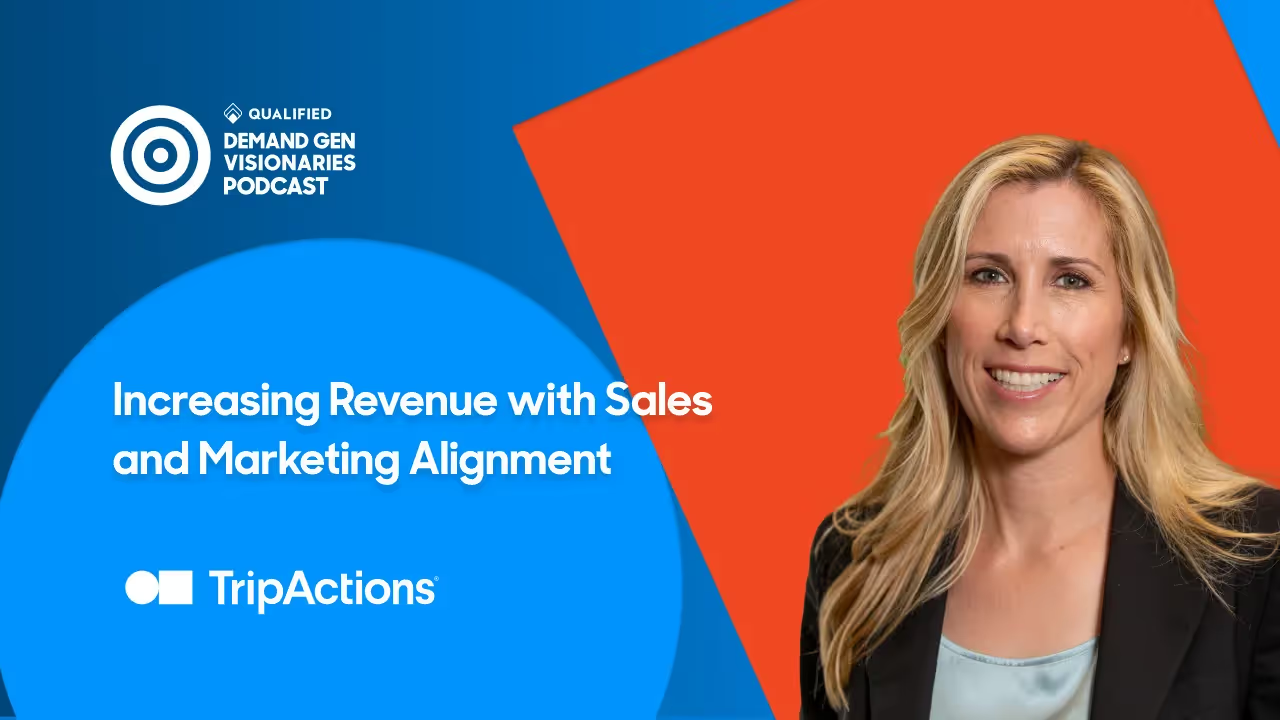Increasing Revenue with Sales and Marketing Alignment
On this episode, Meagen shares insights on how to increase revenue with sales and marketing alignment, the power of the road warrior, and how to shift to proactive marketing.




On this episode, Meagen shares insights on how to increase revenue with sales and marketing alignment, the power of the road warrior, and how to shift to proactive marketing.

This episode features an interview with Meagen Eisenberg, CMO of TripActions.
On this episode, Meagen shares insights on how to increase revenue with sales and marketing alignment, the power of the road warrior, and how to shift to proactive marketing.
Key Takeaways
Stay up to date with weekly drops of fresh B2B marketing and sales content.
On this episode, Meagen shares insights on how to increase revenue with sales and marketing alignment, the power of the road warrior, and how to shift to proactive marketing.


This episode features an interview with Meagen Eisenberg, CMO of TripActions.
On this episode, Meagen shares insights on how to increase revenue with sales and marketing alignment, the power of the road warrior, and how to shift to proactive marketing.
Key Takeaways
Stay up to date with weekly drops of fresh B2B marketing and sales content.
On this episode, Meagen shares insights on how to increase revenue with sales and marketing alignment, the power of the road warrior, and how to shift to proactive marketing.


This episode features an interview with Meagen Eisenberg, CMO of TripActions.
On this episode, Meagen shares insights on how to increase revenue with sales and marketing alignment, the power of the road warrior, and how to shift to proactive marketing.
Key Takeaways
Stay up to date with weekly drops of fresh B2B marketing and sales content.
On this episode, Meagen shares insights on how to increase revenue with sales and marketing alignment, the power of the road warrior, and how to shift to proactive marketing.



This episode features an interview with Meagen Eisenberg, CMO of TripActions.
On this episode, Meagen shares insights on how to increase revenue with sales and marketing alignment, the power of the road warrior, and how to shift to proactive marketing.
Key Takeaways
Discover how we can help you convert more prospects into pipeline–right from your website.